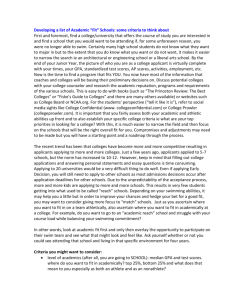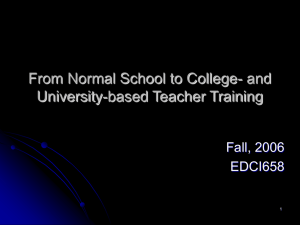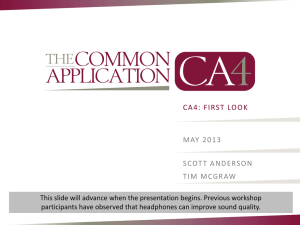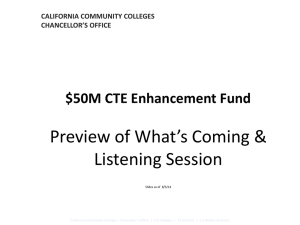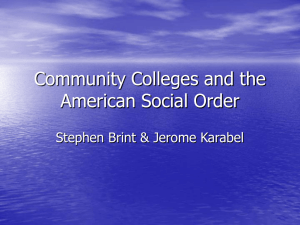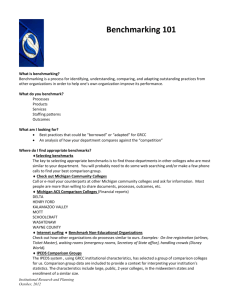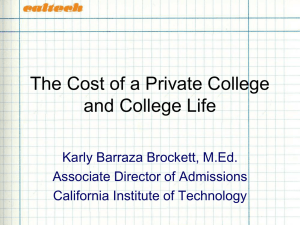The Urban Institute - Accelerating Opportunity
advertisement
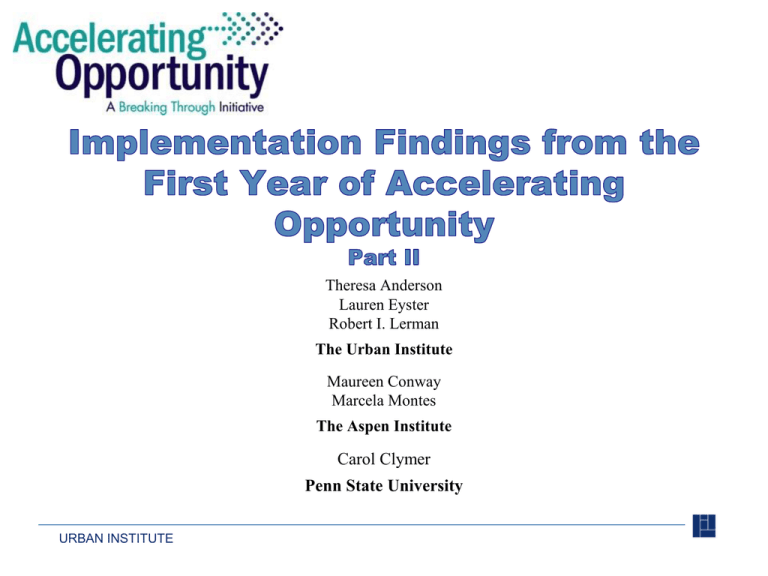
Theresa Anderson Lauren Eyster Robert I. Lerman The Urban Institute Maureen Conway Marcela Montes The Aspen Institute Carol Clymer Penn State University URBAN INSTITUTE URBAN INSTITUTE 2 Across 30 colleges (3 excluded): TOTAL Average per College Median per College $9,115,032 $303,834 $277,577 The distribution: Personnel Consultants 72.4% 0.1% URBAN INSTITUTE Courses Support Services Tuition/ Scholarships Advertising Other 23.3% 0.4% 1.6% 0.7% 0.6% 3 Note: The average cost per student was misreported in the original webinar. The number presented here is correct. URBAN INSTITUTE 4 Much of the first year was devoted to start-up activities AO seems to be serving the target population, but many students have secondary school credentials The change in Pell rules affected recruitment strategies Pathways were primarily concentrated in manufacturing and healthcare URBAN INSTITUTE 5 Many students in AO expressed satisfaction with the program and tried to recruit others to join Some colleges IL and NC used bridge programs for AO-eligible students in the 6th to 8th grade adult education levels Team teaching approaches ranged from a high level of integration to the adult education instructor acting as a teacher’s aide URBAN INSTITUTE 6 Team teaching presented a financing challenge to states and colleges Many support services were provided, but differentiation for AO was moderate Almost all colleges had connections with workforce agencies, but information about employer engagement was mixed URBAN INSTITUTE 7 Personnel was the most expensive aspect of AO programs The cost per student is approximately $4,546, and the cost per credit is likely somewhere between $226 and $565 The cost data are still being developed and will improve throughout the evaluation Note: The average cost URBAN INSTITUTE per student was misreported in the original webinar. The number presented here is correct. 8 What were student outcomes? How many completed pathways, obtained credentials, became employed in their area of training, and experienced wage increases? How did AO impact the student outcomes relative to what they would have achieved otherwise? Did cultural change occurred as a result of AO, on either the state or college level? Did AO result in policy changes? Did AO achieve scale? Which aspects of AO were seen as most sustainable? URBAN INSTITUTE 9 Theresa Anderson AO Project Manager The Urban Institute tanderson@urban.org (202) 261-5847 URBAN INSTITUTE 10 URBAN INSTITUTE 11 URBAN INSTITUTE 12 URBAN INSTITUTE 13 Excluded: 0 100%: 3 0%: 1 URBAN INSTITUTE Excluded: 3 100%: 1 0%: 2 Excluded: 4 100%: 0 0%: 0 Excluded: 7 100%: 0 0%: 7 Excluded: 14 100%: 4 0%: 10 14 82% of colleges used Complementary-Supportive Teaching 70% of colleges used Monitoring Teacher 55% used Traditional Team Teaching 4 colleges reported that there was no team teaching in Year 1, all in NC URBAN INSTITUTE 15 Colleges URBAN INSTITUTE 16 URBAN INSTITUTE 17


